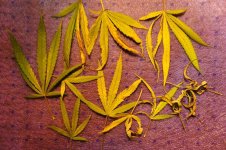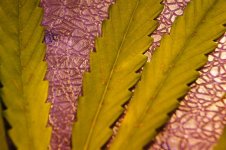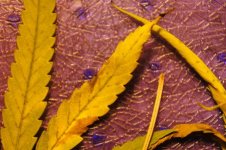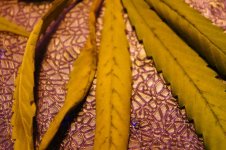well xare, Im sure open to ideas, but that aint the first casualty ive had this year. or last year either for that matter. Im not sure why you think its root rot, but let me give you some more of the facts that im lookin at.
The condition starts with round spots on some of the largest leaves, as the spots spread, the leaf yellows and falls from the plant and spots begin to appear on surrounding large leaves and as the spots multiply, the leaves yellow and die. That continues until all of the large leaves are gone and by then its appearing on secondary leaves. This describes a 2 week period. This condition seems to be on the trees and many other native species in my enviroment. Their leaves have the same spots and fall off just as they do on the cannabis.
These plants arent planted in the same soil. They are spread over 8 sites miles apart in very different types of soil from black rich loam to high clay content soil. Plants in each location have the spots.
Weve practically been in drought with temps for 95-100 nearly every day. Soil temps are in the 80's. Can roots rot under those conditions?
All plants dont respond the same. The blue hash plants seem unaffected at any site. Sensi star doesnt seem to have it. Standing right next to it can be a white widow or biddy early thats seemingly covered with it with every leaf yellowing. Further, the biddy early seems highly sensitive. It has branches wilt, or the whole plant will wilt, regaurdless of the site. I have biddy earlys wilting at 6 different sites miles apart. The white widow gets the condition but it doesnt wilt, it just doesnt seem to progress any. The buds dont grow and the plants look yellow all over.
Ill piss on them if it would help. After hearing those facts do you still think its a root fungus? If so, what should i pour on them? Ill pull up the plant in the picture above and take a pic of the roots if you want to see them.
Ive got 12 of these girls and every lower leaf is spotted and falling off. Ive got a few weeks to figure it out.
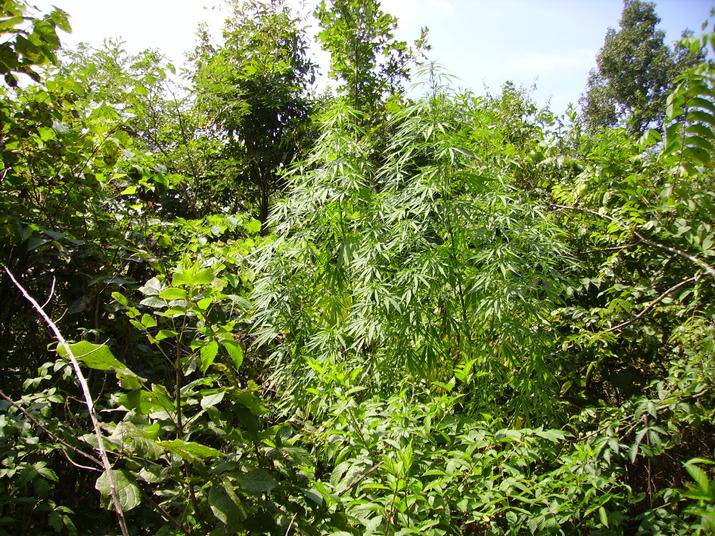
The condition starts with round spots on some of the largest leaves, as the spots spread, the leaf yellows and falls from the plant and spots begin to appear on surrounding large leaves and as the spots multiply, the leaves yellow and die. That continues until all of the large leaves are gone and by then its appearing on secondary leaves. This describes a 2 week period. This condition seems to be on the trees and many other native species in my enviroment. Their leaves have the same spots and fall off just as they do on the cannabis.
These plants arent planted in the same soil. They are spread over 8 sites miles apart in very different types of soil from black rich loam to high clay content soil. Plants in each location have the spots.
Weve practically been in drought with temps for 95-100 nearly every day. Soil temps are in the 80's. Can roots rot under those conditions?
All plants dont respond the same. The blue hash plants seem unaffected at any site. Sensi star doesnt seem to have it. Standing right next to it can be a white widow or biddy early thats seemingly covered with it with every leaf yellowing. Further, the biddy early seems highly sensitive. It has branches wilt, or the whole plant will wilt, regaurdless of the site. I have biddy earlys wilting at 6 different sites miles apart. The white widow gets the condition but it doesnt wilt, it just doesnt seem to progress any. The buds dont grow and the plants look yellow all over.
Ill piss on them if it would help. After hearing those facts do you still think its a root fungus? If so, what should i pour on them? Ill pull up the plant in the picture above and take a pic of the roots if you want to see them.
Ive got 12 of these girls and every lower leaf is spotted and falling off. Ive got a few weeks to figure it out.

 Brand new 1st time outdoor grow.
Brand new 1st time outdoor grow. 


